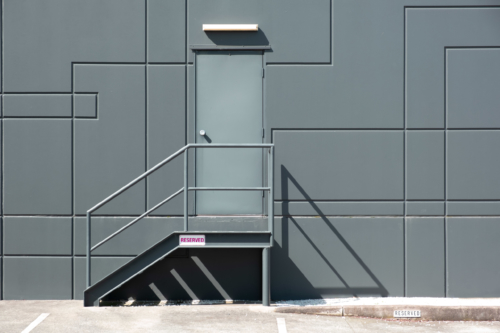Fighting inequality through postsecondary transition programs
Ensuring successful postsecondary transitions for all students, especially diverse students, is dependent on a deep analysis and deconstruction of our systems, especially our educational system. We need to seriously explore and implement solutions to end inequity. Inequity in our education system is the central reason for poor postsecondary transitions for diverse students. Institutions of higher education have begun to realize that there are major gaps in the educational experiences of diverse students. These gaps negatively affect students’ successful transition to postsecondary education. Through programming and advocacy, higher education aims to fill the gaps.
Successful transition is largely based on the preparation received at the secondary level of education. Since schools are largely funded by property taxes, more affluent schools are able to provide more funds for educational services. According to Baker, Farrie and Sciarra,
“The amount of state and local revenue raised drives the majority of current spending of local public school districts, because federal aid constitutes such a relatively small share. Furthermore, the amount of money a district is able [to] spend on current operations determines the staffing ratios, class sizes and wages a local public school district is able to pay.”
Therefore, schools located in poor areas are unable to provide equitable educational experiences for students. These disparities only widen the gap between students who are prepared for postsecondary education and students who are not.

High schools play a huge role in the successful transition of students to postsecondary opportunities.
The Education Trust, studying how to accelerate learning for disadvantaged students, found these students were successful when schools:
- Focused on preparing students for college and careers.
- Built partnerships with businesses and colleges to support student goals.
- Concentrated on academics, making sure that struggling students received additional support. Students were encouraged to challenge themselves academically.
- Ensured that teachers and administrators had high expectations for students.
As a diverse student, my transition to postsecondary education was difficult. I attended a poor high school — but I was in the scholars’ program, designated as a high achiever. The scholars’ cohort attended classes together; we had access to advanced placement courses. After graduating second in my class, I knew I was ready for college. I decided to attend Colgate University, a prestigious liberal arts college in Hamilton, New York, where I was invited to attend a summer program from the Office of Undergraduate Studies (OUS) aimed at easing the transition to college.
School began, and I realized quite early that my fellow students were prepared for college. Many attended private and high-ranking public high schools, They understood how to navigate college and how to be successful, while I had to learn on my feet. OUS helped me acclimate academically and socially. From that time, I vowed to work in a field where I could help mediate educational inequities. And here I am, 17 years later: I create and lead programs and support systems. And I teach students transitioning to postsecondary education.
Factors affecting successful postsecondary transitions
The inequities in our educational system are a major factor. Due to school funding and also systemic racism, low-income students and students of color are not as prepared for postsecondary opportunities. Many students will exhaust financial aid before they can even complete prerequisite courses needed for their major. Other students lack dedicated time to study. For many poor students, their families depend on them to support the household. Balancing school, work and familial responsibilities is not easy. Even navigating the postsecondary education environments themselves can also be challenging. Many students don’t know how to ask for help and lack effective study skills.
Postsecondary institutions are implementing programs to support the success of diverse students.
Programs closing the gap
When I was a graduate student at the University of Wisconsin (UW) – Madison, I worked for the College Access Program (CAP). Program participants have the opportunity to experience life as a college student — learning about the college application process, program offerings and available financial aid; meeting like-minded individuals; and building employability skills. CAP also offers math, writing and career development courses to rising 10th and 11th grade students who identify as first generation, racial minority or low income. Many similar pre-college programs work toward the same goals: Expose students to college and help them transition successfully.
Summer bridge programs like the one I attended at Colgate University provide both academic and social support for at-risk students. Many of these programs report many positive outcomes are reported, yet more longitudinal data needs to be collected.
Some high schools provide access to dual-enrollment programs, which have been shown to be beneficial for students of color and first-generation students. Dual-enrollment programs support under-resourced school districts in their efforts to provide academically challenging curriculum.
Conclusion
I commend institutions of higher education making serious efforts to create programming to help students transition to postsecondary opportunities. These groups make great strides in helping students and their families accomplish goals that have generational impact. But these issues stem from the results of continued inequity in our educational system. Diverse students enter the educational system through the back door. I wonder: What happens to the students that are unable to access these programs? Don’t they deserve an educational experience that is not reliant on having access to these programs?

We need to reexamine our educational system. Ask a few critical questions: Why are there so many inequalities in our educational system? Why do we continue to fund schools on property taxes? Why are some youth prepared for the transition to postsecondary education while other are so grossly unprepared?
Until we address the root of the inequity, we will only help the students who are lucky enough to attend these transition programs. Instead, we must grant each student the same opportunities. Let all students enter the educational system through the front door with the resources and support they need to be successful.
Sophia Alston, Ph.D., Sophia Alston, Ph.D., is an administrator in higher education, where — for the past 16 years — she has created and managed student success programs, built partnerships and managed grants. In addition, she has over 10 years of teaching experience in higher education focusing on education, race and ethnicity. These experiences have provided her with an in-depth understanding of what is needed to cultivate student success with a focus on equity. She also serves as a consultant to organizations and individuals around student success programming, career and technical education, equity issues, and leadership development. Email her.


